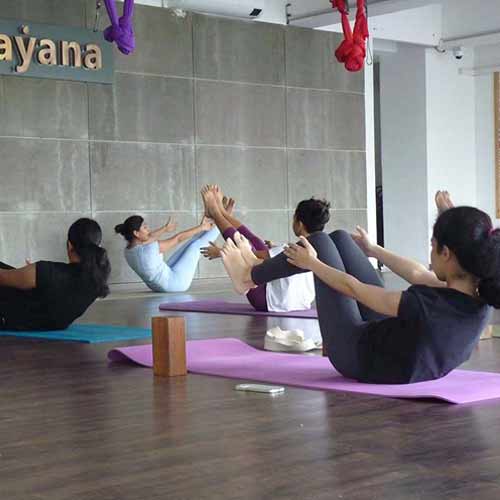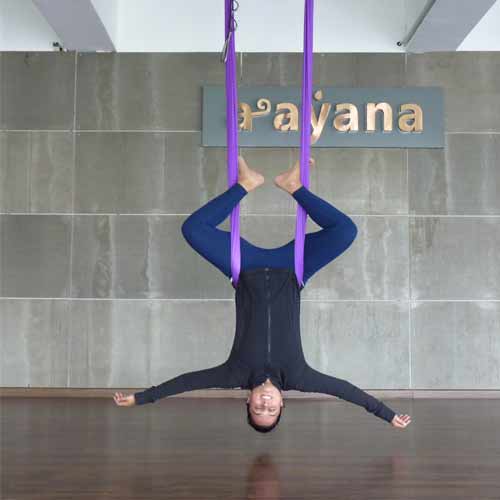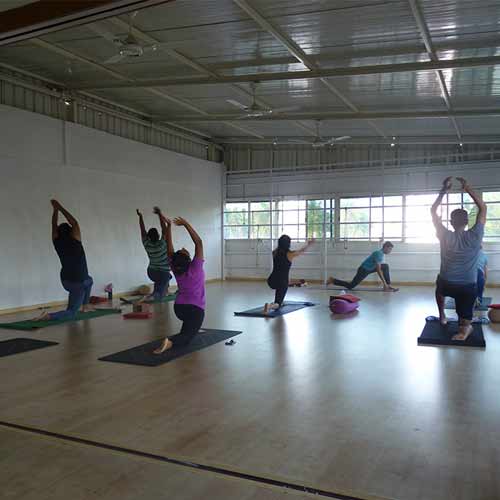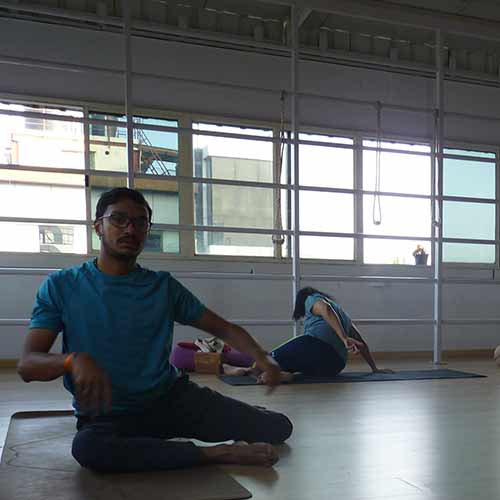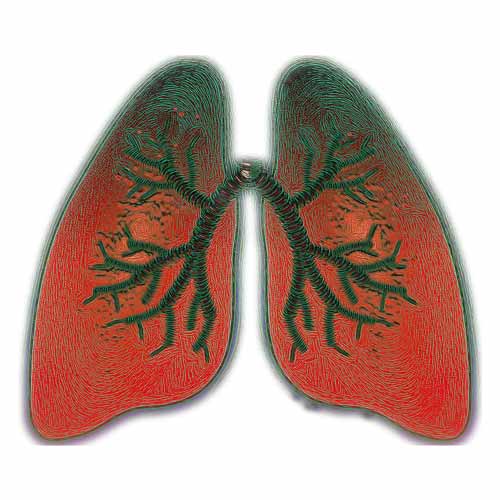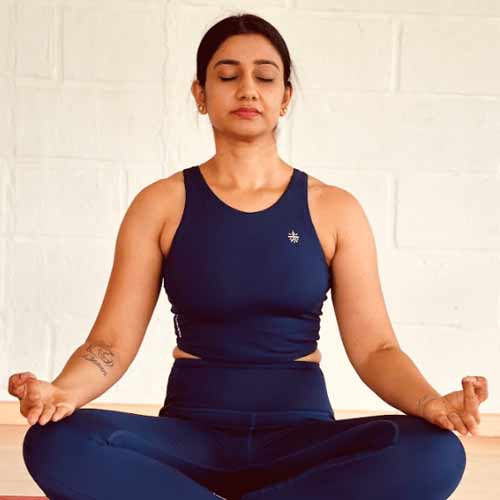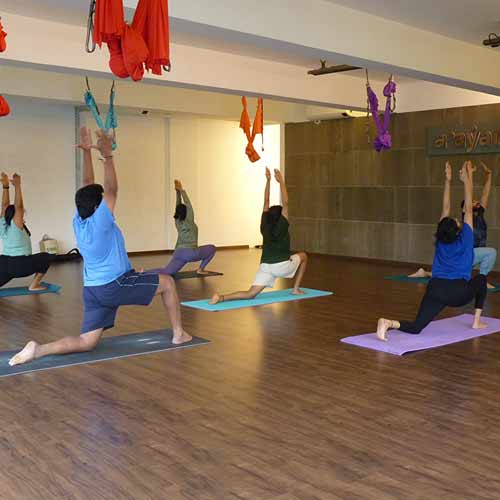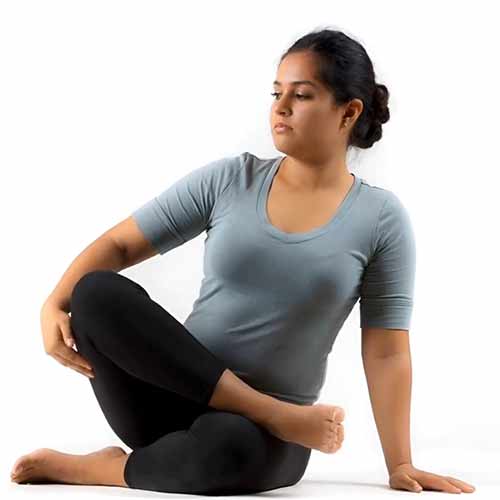NIDRA YOGA – FLOATING AWAKE
Yoga Nidra is based on the fifth limb of Ashtanga (or eight limbs of Yoga) namely Pratyahara. This practice of withdrawing from the senses that keep us engaged with the external world helps us move inwards. Withdrawing all senses other than the sense of hearing, Yoga Nidra guides us on the path towards ‘Prajna’ state which is conscious awareness of deep sleep state.
Manifold Benefits of yoga Nidra
We live in a world which is demanding and competitive. Survival has taken on new dimensions leading to a stress filled mind and a tensed up nervous system. Constantly keeping the system on a fight-or-flight mode results in symptoms such as tension headaches, sleeplessness, anxiety, depression, chest and abdominal pains as well as many other stress-related diseases. The only solution is to give the mind a chance to rest in deep relaxation mode.Guided meditation in the shape of Yoga Nidra has proved extremely beneficial in getting rid of such symptoms and curbing lifestyle induced illnesses.
The resulting relaxation that comes from this process of 45 minutes is said to be equivalent to 3 hours of sleep. The health benefits are tremendous, ranging from controlling hypertension, regulating menstrual issues, overcoming depression to controlling symptoms of diabetes.
The role of Yoga Nidra in reaching into underlying recesses of the mind in order to achieve profound relaxation cannot be stressed enough. Through this process it has been found to be able to plant knowledge in a person’s subconsciousness. Release from addictions, rapid learning of languages, setting intentions to break habits or to improve oneself have all found success through Yoga Nidra.

Meditation in yoga Nidra
The aim of meditation is to bring the individual energy in sync with cosmic energy and attain a state of introspective calmness. Yoga Nidra can be termed as guided meditation since it reaches the practitioner to a place which is neither sleep nor wakefulness. Just as meditation seeks a centre of focus be it sound or a visual, Yoga Nidra uses verbal instructions to make you slip into your subconscious and watch yourself doing it. Yoga Nidra Meditation ensures that you do not relapse into sleep which can be Tamasic (lethargy) but rather alert you again and again to remain observant of the relaxation your mind and body is going through.
In Yoga Nidra Meditation the student is asked to take the awareness to the middle of the eyebrows ,the spot behind which lies the pineal gland. When attention is focused on this spot the gland is activated and melatonin hormone is released. It has been proved that this hormone helps to de-stress, build immunity, bring in restful sleep, help healing and boosting spirits.
Yoga Nidra aids deep sleep
A sure sign of an agitated mind is sleeplessness.Tension and stress cause the nervous system to be ever on the edge which does not make for restful sleep. To make nerves unwind and move away from active mode to rest and rejuvenation mode it is helpful to undergo Yoga Nidra. Whenever Yoga Nidra Meditation is practiced it stills the constant movement of thoughts of an active and awake mind and allows you to enter the arena of sleep. You experience what exactly is sleep with an awareness that keeps you anchored to the outside world as well. All you hear is the instructions and once you enter the state of sleep your subconscious mind takes over. When it is time to come out of the practice the mind becomes aware and you come out of the meditative state. The rest that comes through this method is profound. When the mind is trained to teach itself the technique of moving into a sleep-like stage, it is possible to ease oneself away from a disturbed state of mind. This enables the nerves to settle down thus removing the impediment to deep sleep so very vital for health both physical and mental.
It was Swamy Satyananda Saraswati who introduced Yoga Nidra during the 90s. Based on a thorough study of the Tantric scriptures and practical applications, he set forth a method to lead the mind from its conscious bearings to deeper realms of the subconscious in order to initiate extremely beneficial repose
Script for Yoga Nidra
The script for Yoga Nidra which is used by Yoga teachers worldwide today moves through eight stages of —
- Internalisation – An active body and mind needs to settle down and for this attention is first drawn to external sounds so as to saturate the sense of hearing. Thereafter internal sounds are focused on.
- Sankalpa or setting intentions – Research and studies have shown us that it is possible to sink an intention well within the subconscious to achieve far greater success than repeating intentions with a conscious mind. Getting rid of ailments, mental disturbances, detrimental habits by generating an affirmation of positive qualities is done through Sankalpa or repeating an intention at this stage.
- Rotation of consciousness– The practitioner is then led from point to point on the body allowing the consciousness to rotate around the entire body so as to deepen the internalisation which helps in letting go of tightness in the body.
- Breath awareness – Moving the consciousness along the psychic path of breath while noting the slowing down of breath is then instructed to trigger the relaxation response.
- Manifestation of opposites – The mind is then made to manifest opposing experiences such as heat and cold etc.
- Visualisation – A powerful medium to let the nervous system to move from the sympathetic to the parasympathetic activation is that of visualisation. Individual energy is gently allowed to merge with cosmic energy for a expansion of consciousness experience that is highly restorative.
- Sankalpa -The intention is repeated once more to embed it into the psyche and help us subconsciously.
- Externalisation -Finally the mind is brought back to external awareness through a set of instructions.
Yoga Nidra is a practice by itself
Anybody can get into Yoga Nidra without any prior preparations of asana or pranayama practice. It is a proven form of meditation as well as a mind-body therapeutic program. It has been introduced to army veterans, stressed out individuals, depressed people, addicts, schools and hospitals with excellent results.
Join now a yoga class at Aayana yoga Academy: Vinyasa, Aerial, Meditation, Hatha, Yin, Nidra, Pranayama, Mudgar, High-Intensity, Gentle flow, Power yoga, Ashtanga yoga, Kids yoga …
Ashtanga Yoga
Ashtanga Yoga Eight Limbed Path of Transformation rooted in ancient tradition A dynamic practice by…
Power Yoga Class
POWER YOGA – TRANSFORM YOUR BODY Power up your yoga practice: Power up your yoga…
Mudgar Yoga
MUDGAR A COMPLETE GUIDE Exercises, Benefits, Symbolism Traditional Indian mace Physical trainingThe Mudgar (मुद्गर), a traditional Indian…
Aerial Yoga Class
AERIAL YOGA CLASS – YOGA THAT DEFIES GRAVITY strengthen mid-air Who could attend Aerial yoga?…
Hatha Yoga Class
HATHA YOGA – THE CLASSICAL WAY The classical form of yoga where you practice asanas…
Gentle Flow Yoga
STRETCH & BREATHE IN GENTLE YOGA the calm side to Yoga The way to be…
Kids Yoga Class
YOGA FOR CHILDREN Growing Minds Where Play Meets Inner Peace A trending practiceSchools and parents…
Pranayama Class
PRANA YOGA FOR HEALTHY MIND FOR HEALTHY BODy Prana adding dimensions to life force The…
Meditation
MEDITATION – THE PERFECT TECHNIQUE FOR MINDFUL AWARENESS Dharana Single minded focus Stilling the mindReaching…
Vinyasa Yoga Class
FLOW WITH VINYASA YOGA Vinyasa yoga class flow from one to another Vinyasa one breath…
Yin Yoga Class
YIN YOGA – THE INTROSPECTIVE SIDE OF YOGA BANGALORE ACADEMY YIN REPRESENTS PASSIVE FEMININE MOON…


